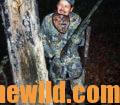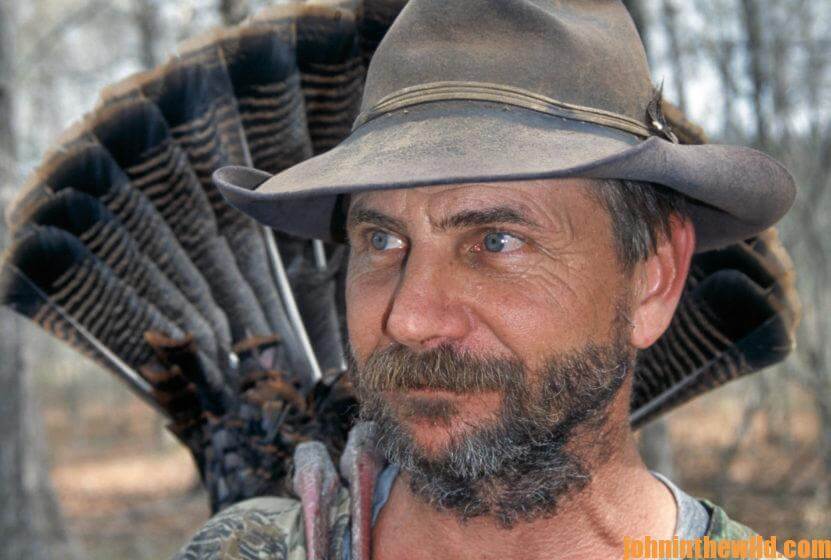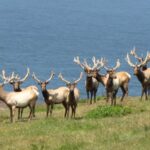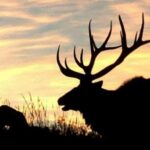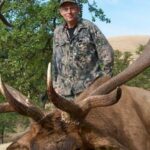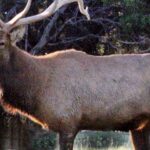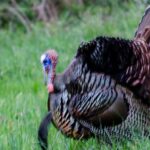Editor’s Note: With turkey-hunting season still occurring in parts of the nation and for those who’ve finished their spring turkey seasons but are examining what happened during their seasons, we’re covering some ideas this week for hunting late-season hard-to-take turkeys and learning about missing a tough-to-take tom sometimes. We all hate to admit that happens, but it does. Turkey hunting for me is about building memories, and the tougher the gobbler is to take, the stronger the memory I’ll have after I finally harvest him. Also, by taking a legendary bird, I may open-up that same area of the woods to a large group of turkeys that will gobble next season, since the boss gobbler will be gone.
 A legendary turkey lived at White Oak Plantation near Tuskegee, Alabama, for about 2 or 3 years. Many men attempted to take this Man Eater, but none were successful. Some had come close to him but had missed their shots, and others had had to watch him strut and drum just out of range. This tom was one of the best-educated turkeys I’d ever hunted.
A legendary turkey lived at White Oak Plantation near Tuskegee, Alabama, for about 2 or 3 years. Many men attempted to take this Man Eater, but none were successful. Some had come close to him but had missed their shots, and others had had to watch him strut and drum just out of range. This tom was one of the best-educated turkeys I’d ever hunted.
We’d been chasing this gobbler from before daylight until almost noon for two days. Finally, on the third day, my guide Bo Pittman and I were down in a little bottom between two hills in a place where a turkey naturally would walk and feed. We had hiked a lot that morning. Bo made a few light yelps when we sat down, and the Man Eater gobbled from about 300-400 yards away.
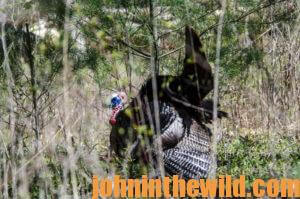 “We might as well take a nap,” Bo said, “Because if he comes to that call, he’ll come in slowly. He’ll be looking for danger; and he probably won’t reach us for 1 – 1-1/2 hours, so you may as well get comfortable against the tree where you’re leaning. Plan on taking a short nap. That’s what I’m going to do. More than likely, I’ll wake up before you do, and if I see or hear the Man Eater, I’ll wake you up. We’re on Turkey Time right now, and I know for certain that if the Man Eater decides to come our way, he’ll take his time getting here.”
“We might as well take a nap,” Bo said, “Because if he comes to that call, he’ll come in slowly. He’ll be looking for danger; and he probably won’t reach us for 1 – 1-1/2 hours, so you may as well get comfortable against the tree where you’re leaning. Plan on taking a short nap. That’s what I’m going to do. More than likely, I’ll wake up before you do, and if I see or hear the Man Eater, I’ll wake you up. We’re on Turkey Time right now, and I know for certain that if the Man Eater decides to come our way, he’ll take his time getting here.”
Some of the best sleep I’ve ever had has been in turkey woods because supper’s served late generally, and hunters eat a big breakfast before we go afield. Good food and long walks lead to heavy eyelids dropping. I fell asleep in less than 10 seconds of leaning against that tree. I had a system of sleeping in turkey woods that always had paid off for me. Many times, as opposed to staying awake, while waiting for a turkey to come to where I was, I’d wake up and open one eye every 10 minutes or so to see if a gobbler had arrived. Failing to see a bird, I’d go back to sleep quickly because, with only one eye open, I was only half-awake. I used this tactic regularly, especially when hunting between 11:00 am and 2:00 pm. In Alabama, where I lived, we could hunt all day. The majority of turkeys generally came close to me during that 11:00 – 2:00 time period. Many times, I would awaken to the sounds of a turkey drumming or of wings dragging in the leaves, while the tom strutted. During one of my one-eyed surveys, Bo gouged me and said, “The Man Eater’s close. He’s walking on that hill to the left of us. Go ahead, and cock the hammer on your shotgun. Get down on your gun because he’ll be here in just a few minutes.”
I usually sleep with my legs up. I quickly can put my blackpowder shotgun on my knee and get ready for the shot. Then if I wake up, and a turkey’s in front of me, I’m ready. That’s the procedure I went through before I saw the Man Eater. Like Bo, I could hear the bird walking, and, in only a few seconds, I heard him drumming.
 “There he is,” Bo announced.” I saw the Man Eater about 35-40 yards away. “Shoot him,” Bo instructed in a whisper. But I wasn’t convinced that this turkey was within range of my blackpowder gun. The bird was on about the same level as we were. I whispered to Bo, “I don’t think we’re in range.” “He’s not going to come any closer than he is right now,” Bo quickly explained.
“There he is,” Bo announced.” I saw the Man Eater about 35-40 yards away. “Shoot him,” Bo instructed in a whisper. But I wasn’t convinced that this turkey was within range of my blackpowder gun. The bird was on about the same level as we were. I whispered to Bo, “I don’t think we’re in range.” “He’s not going to come any closer than he is right now,” Bo quickly explained.
I put my cheek right against the stock, looked down the barrel at the bead at the end of the barrel, super-imposed the bead on the top of the turkey’s head, knowing at that distance my shot pattern would drop and squeezed the trigger. Bo could see better than I could after that puff of smoke cleared in front of me. He stood up quickly and told me, “Don’t worry. You didn’t cut a feather on that bird. As a matter of fact, I think he left before your shot got to him, but it was the only shot you had. If he saw the smoke coming out of the barrel, he might have thought that lightning struck, or maybe he didn’t think at all. I guess the Man Eater got you just like he’s gotten every hunter I’ve ever taken to hunt him.”
“Why do you call him the Man Eater?” I asked Bo. He answered with a grin, “I call him the Man Eater because he gobbles-up hunters – just like how he gobbled you up.”
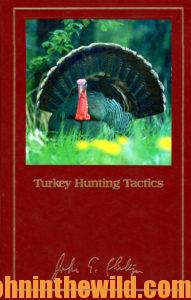 To learn more about turkey hunting, check out John E. Phillips’s book, “Turkey Hunting Tactics,” at https://www.amazon.com/gp/product/B007PK9B2G/ref=dbs_a_def_rwt_hsch_vapi_taft_p2_i9
To learn more about turkey hunting, check out John E. Phillips’s book, “Turkey Hunting Tactics,” at https://www.amazon.com/gp/product/B007PK9B2G/ref=dbs_a_def_rwt_hsch_vapi_taft_p2_i9
that’s available in Kindle, print and Audible versions. You may have to cut and paste this link into your browser. (When you click on this book, notice on the left where Amazon says you can read 10% of this book for free and hear 10% for free). To learn more about other turkey books by John E. Phillips, go to www.amazon.com/author/johnephillips.
Tomorrow: The Holographic Sight Missed Turkey


